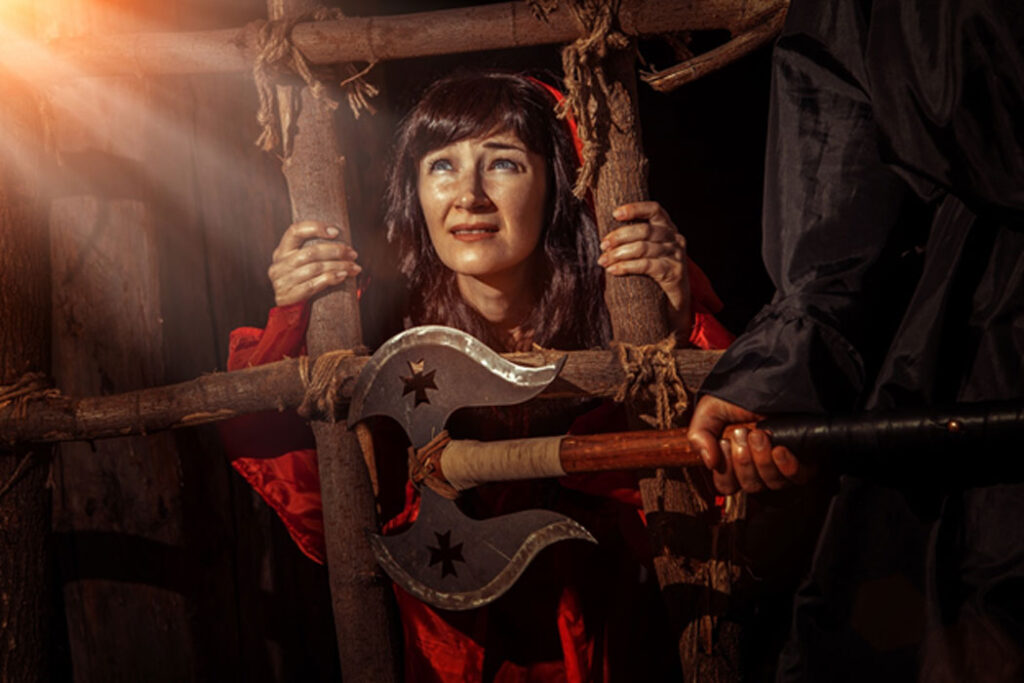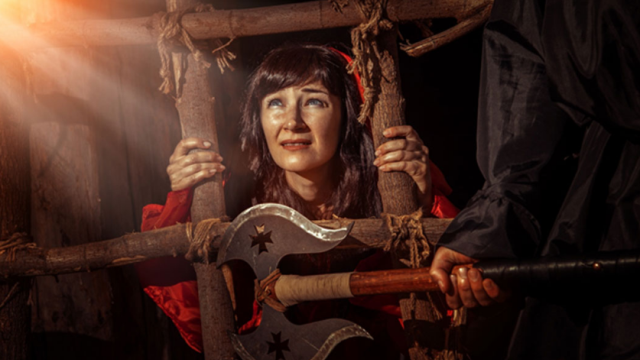

Once a prison for people (mostly women) accused of witchcraft, what is held to be Britain’s most haunted house is up for sale – again.
Known as “The Cage” in St Osyth, England, this historic building has been owned by Vanessa Mitchell since 2004. Having been terrorized by “evil spirits” she moved out in 2008 and has repeatedly tried to sell the property. Now, for a third time, it is on the market with an asking price of £260,000 ($293,188).
Vanessa told reporters at the Clacton and Frinton Gazette that in 2008 “she fled the house after she was physically attacked by spirits.” She also claims she was “plagued by ghostly figures” who she says pushed her over while pregnant and that she “witnessed mysterious blood splatters”. Furthermore, Vanessa claims that on one occasion she was “spanked on the bottom by a demonic entity”, evidence, it would appear, that ghosts have functioning hormonal systems.
Investigating The Witches Prison
The earliest history of the cottage – or The Cage – was that once it was used to hold prisoners accused of witchcraft. Men, women, and children were detained in the cage until 1908. Frinton-based estate agent Home Domus told reporters at the Clacton and Frinton Gazette: “The Cage is one of the most notorious and well-documented haunted 16th Century cottages in Britain, once a medieval prison where 13 witches were held pre-trial, subsequently resulting in three hangings.”

The witches prison held men, women, and child awaiting trial. (serpeblu / Adobe Stock)
The gable end of the cottage holds a plaque which details the tragic story of Ursula Kemp, a St. Osyth woman that was called upon by her community to heal sick folk but fell out with a woman from a notorious local family. Kemp’s semi-miraculous healing skills were unfortunately the rope with which she was hung, and after being found guilty for witchcraft in 1582 AD, that is precisely the fate she met.
Before she was judged and hanged, Ursula Kemp ratted and named a lot of other women from St. Osyth whom she claimed were witches. They all in turn broke the ‘bro-code’ and before confessing they all named more witches. Thus, in this fateful year, paranoid satanic panic in Chelmsford saw many more women from St. Osyth on trial for witchcraft. According to an article on Mysterious Britain, “Ten of those women faced charges of ‘bewitching to death’”.
Outside of the cage a walled courtyard leads to “Coffin Alley” which is now a small passageway running alongside the property, but long ago served as a “spirit road” along which dead bodies were transported to the cemetery. Bringing us perfectly to the discovery of a skeleton excavated in St. Osyth in 1921, which was immediately thought to have been Kemp, because it had signs that its legs had been bound in iron clamps.

The Cage was last used as a witches prison in 1908. (Rightmove)
Enter, The Witch Huntress
Aiming to inject rationality and reason into the discovery of the alleged “witches skeleton” in 2007, Dr. Alison Rowlands, a leading authority on witchcraft from Essex University, pointed out that “ten women from St. Osyth had been executed for witchcraft”. Being a scientist, Rowlands calculated that if the suspected skeleton of Ursula Kemp was that of a witch, it only has a one in ten chance of actually being Kemp, because all ten women would have been leg clamped.
A 2007 article in The Daily Gazette entitled ‘ St. Osyth: Which witch is which?’ featured ‘Dr Rowlands’ research, in which the she claimed the skeleton found in a garden in Mill Street in 1921 “may not have been” that of Kemp, who was hanged after a trial in Chelmsford in 1582. She said, “Two skeletons were found and there are at least ten possibilities – five who died at Chelmsford before witchcraft trials, as well as three women who were tried as witches in 1645.”
Return To The Cage
The big question that remains is why isn’t The Cage selling? To help displace dark forces, and to help stimulate ‘market forces’, the sales agent claims, “the spirits, including a satanic-looking goat, have now been vanquished” and they can confirm that “The house has now been cleared of the many evil residents encountered over the years.”

The witches prison known as ‘The Cage’ is for sale. (Rightmove)
The agent, delighted that 500 years of poltergeists and demonic possession are now over, says “it’s time for someone else to take on this unique Cage, one of only seven cages left in the country, and none with the reputation of this one.” “It is still haunted”, the agent added, “but there seems to be a certain newly found harmony within.”
But, but, but…teacher, I have a question. See when folk see ghosts dressed in period clothing, as is so often reported at the cage, where witches and 15th century spectral characters touch people up; does this mean ‘cotton and leather’ also have a souls that retain their material forms after death? How does that happen then? Teacher, teacher…hello?